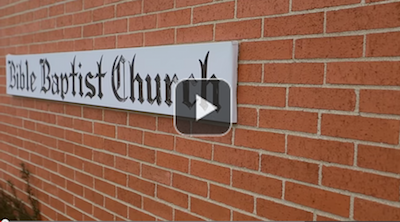JUNE 13, 2021
NATURE OF THE RESURRECTION BODY (PART I)
INTRODUCTION:
1. The next aspect of the subject at hand to which the Apostle will give attention is the nature of the resurrection body. Having proved the fact of the resurrection, he now comes to illustrate its nature, and to teach with what kind of bodies the dead in Christ are to rise.
2. It seems that the great objection against the doctrine rested on the assumption that our future bodies are to be of the same nature as those which we presently have. Paul considered it foolish to assume that the resurrection body would consist of flesh and blood and sustained by air, food, and sleep.
3. Our future bodies may be identical with our present bodies, and yet organized in a very different way. The Apostle takes the occasion to show what a vast change will be made in the bodies of believers at the resurrection.
4. We are grateful for their objection, because, in addressing it, the Apostle answers many of our own questions, and provides us with answers for those who inquire about these particular issues concerning our faith.
I. OBSERVE FIRST THE OBJECTION PROPOSED IS TWOFOLD. (VERSE 35)
A. BY WHAT POWER ARE THE DEAD RAISED UP? “But some man will say, HOW are the dead raised up?”
1. They want to know by what means is it done. What power is equal to this effect? It was an opinion that prevailed among the heathen, an opinion which the Sadducees held as well, that it was not within the compass of divine power to make mortals immortal, or revive and restore the dead.
2. In proposing the question, they were implying that the thing is impossible.” How are they raised?”
3. To these objectors, our Lord’s answer to the Sadducees in Matt. 22:29 suits quite well: “ye do err, not knowing the Scriptures, nor the power of God.”
B. WHAT IS THE MAKEUP OF THE BODY THAT SHALL RISE? “With what (what kind of) body will they come?
1. Will it be the same body, with like shape, features, statutes, members, qualities, etc.?
2. The first question is clearly that of an unbelieving skeptic. However, this question might also be asked by true believers. Many times we hear questions such as, “Will I know my loved ones?” “Will we all be adults in heaven?” “Will we still enjoy eating and drinking?”
3. Though the apostle does not provide answers to all of our questions, he does reveal to us what the nature of our new bodies shall be. (Phil. 3:21)
II. PAUL GIVES ANSWERS TO BOTH PARTS OF THE OBJECTION. (VERSES 36-49)
A. THE FIRST QUESTION IS ANSWERED BY IMPLICATION. (VERSES 36, 37) The analogy by which the Apostle sets out to answer the “what,” also settles the “how” by implication.
1. The resurrection of the dead in Christ shall be wrought by the same divine power which they had all observed in something very like it, year after year, in the planting of seeds in the ground.
2. In this simple exercise on their part, they must expect that, in order for life to come forth, the seed must fall into the ground and die. (See John 12:24) How did the dead seed produce life, unless God revived it?
3. “How are the dead raised up?” By the same divine power that causes a dead kernel of wheat to revive and produce more wheat.
B. IN REPLYING TO THE SECOND QUESTION, HIS ANSWER IS MUCH LONGER. (VERSES 37-44)
1. As to what body they shall have when they come forth, he declares that there shall be a great change that takes place, just as there is a great change that occurs in the grain that is sown. (Verse 37)
a) You do not sow the “body which shall be,” that is, you do not sow the plant, that only the “bare grain.” The point is that what comes up is very different from what is deposited into the ground.
b) The comparison to be drawn, however, is not between the outward appearances of the two, but between the two natures. You sow seed, a plant appears; you sow a natural corruptible body; a spiritual, incorruptible body appears.
2. Again, as to what body, God will provide it according to His purpose. (Verse 38) The body that He now gives to each seed is in accordance with His creative decree. So it is with regard to the matter of suitable bodies for the souls of the redeemed.
3. He proceeds to observe that there is a great variety with respect to other bodies in the universe. (Verses 39–41)
a) In bodies of flesh, all are not the same, but there are four types, namely common human, beast, fish, and fowl. (Verse 39)
b) In bodies celestial and terrestrial there is also a difference, and what is for the glory of one is not for the glory of the other. Earthly bodies are not adapted for the heavenly regions, nor are heavenly bodies fitted for the condition of earthly beings. (Verse 40)
c) There is a variety of glory among heavenly bodies themselves. (Verse 41)
d) All of this is meant to illustrate to us that the bodies of the dead, when they rise, will be changed and fitted for the heavenly regions, and that there will be a variety of glories among the saints in heaven. There is a great variety of glories even among the stars themselves.
4. Keeping in mind all of the above; we come to the point of these several examples. “So also is the resurrection of the dead.” (Verse 42a) Let us notice the comparisons that are particularly intended. (Verses 42b-44a)
a) “It is sown in corruption, it is raised in incorruption.” (Verse 42b) Burying the dead is like committing the seed to the earth that it may spring out again. Our bodies, when buried, putrefy and decay and eventually return to the dust, but when they rise they shall be new, and never again liable to corruption.
b) “It is sown in dishonor, it is raised in glory.” (Verse 43a) These bodies, even now, are vile. (Phil. 3:21) Being dead, they are loathsome. But, at the resurrection they shall come forth with a glory like unto that of Christ’s own glorious body. (I John 3:2)
c) “It is sown in weakness, it shall be raised in power.” (Verse 43b) the dead, lifeless body is utterly powerless, unable to move or stir. But, when it comes forth alive, it will be given heavenly vigor that shall never experience fatigue. Though it shall be engaged in constant activity, it shall have no need for sleep or rejuvenation.
d) “It is sown a natural body, it is raised a spiritual body.” (Verse 44a)
(1) This does not mean that the body shall become spirit. That would be a contradiction of terms, spiritual body. It would also be in contradiction to all that he is here teaching with respect to the resurrection of the dead.
(2) This involves restoration of the spiritual purity of the original creation before man was ruined by the fall. But it is much more besides.
(3) “Sown a natural body,” a body fitted to the conditions, pleasures, and enjoyments of this life, which in comparison to the heavenly state, are earthly and carnal.
(4) “Raised a spiritual body.” We shall have bodies purified and refined, made fit for perpetual association with spirits made perfect.
C. HE NOW ILLUSTRATES THIS TRUTH BY A COMPARISON OF THE FIRST AND SECOND ADAM. (VERSES 44b-49)
1. We have our natural (animal) body, which we received from Adam. “There is a natural body.” We expect to receive our spiritual body from the Second Adam. “There is a spiritual body.” This idea is present through the whole comparison.
2. This truth is but consistent with the different characters these two persons bear. (Verse 45)
a) “The first Adam was made a living soul.” He was such a being as ourselves, and with a power to reproduce such beings, and convey to them a natural body like our own.
b) “The second Adam is a quickening spirit.” He is the resurrection and the life. (John 11:25) He has life in Himself, and quickens whom He will. (John 5:20, 21)
3. In this context, Paul announces a general law, a law that is demonstrated in the fact that the natural body precedes the spiritual body. (Verse 46)
a) Adam’s earthly state was to be preparatory to the heavenly state.
b) The present life is like seedtime, the harvest is hereafter.
c) The natural comes before the spiritual. We are born before we are born again.
4. The general principle, that the natural precedes the spiritual is again illustrated in the fact that Adam came before Christ. “The first man is of the earth, earthy, the second man is the Lord from heaven.” (Verse 47)
a) The first man was of the earth, made out of the earth, fitted for the earth.
b) The second Man is from heaven. He gives spiritual life from heaven. (John 6:33) He came down from heaven, and was in heaven at the same time. (John 3:13)
5. They that are earthy are descendants of Adam; they that are heavenly are Christ’s risen people. (Verse 48)
a) The earthy is Adam. They that are earthy are his descendants.
b) The heavenly is Christ. They that are heavenly are His bodily risen people.
6. As to the objection put forth founded on the assumption that our bodies hereafter would be the same as what we now have, here is the answer. (Verse 49)
a) We have borne the bodily image of Adam here on earth. We are as he was, of the earth, earthy.
b) We shall in the resurrection bear the image of Christ. We shall have a body like unto His glorious body, a body suited for heaven. (Phil. 3:21)
c) This is speaking of our resurrection bodies which we shall receive in the day of the resurrection when Christ shall appear.
(1) Some, instead of, “We shall also bear…” prefer “Let us bear…” However, in light of the subject under discussion that rendering makes no sense.
(2) Though we derive a holy nature from Christ, and ought to strive to bear a holy likeness to him here in this world, it is His glorious bodily image that is here in view, and that image we shall not bear until Christ comes again. Then, all who sleep in Jesus shall rise in His likeness, and living saints shall be changed in a moment into that same image.



Speak Your Mind